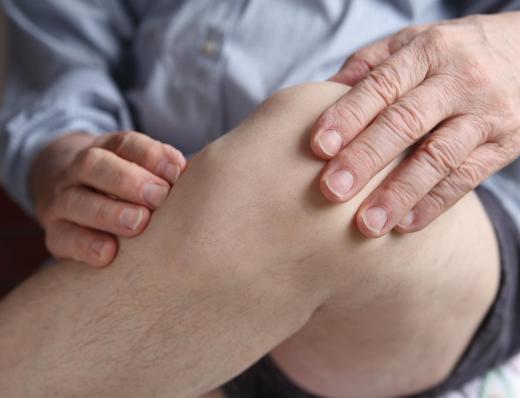A wedge positioner is a type of sleep aid used to keep the body positioned in a certain way while sleeping or napping. It features a triangular, or wedge-shaped design, and consists of a thick cushion covered by fabric or waterproof plastic. Traditionally, parents have relied on the wedge positioner to help infants sleep more soundly, though modern experts have warned against the use of these cushions due to the risk of suffocation. Adults may use a wedge positioner to cope with arthritis pain or other conditions. Medical professions also rely on these cushions to properly position a patient during MRIs and other medical procedures.
The standard wedge positioner consists of a simply triangular-shaped pad, which is placed below the body to elevate the head. A flat mat may extend from the lower side of the wedge to serve as a cushioned area below the body. Models made for infants often have bolsters extending from the wedge that are designed to rest below the baby's armpits and cradle the child in place. Many are ventilated to prevent the child from overheating.

Wedge positioners first gained popularity during the 1980s, when parents used them to prevent plagiocenphaly in infants, a condition that leads to flat spots on the head. Doctors at the time also encouraged parents to use these cushions to keep the baby's head elevated, which aids digestion and reduces problems with acid reflux. Some parents relied on a wedge positioner because it simply helped their child remain more comfortable, and sleep more soundly. Finally, the wedge positioner was thought to be an effective tool for keeping infants on their backs as they slept in an effort to prevent sudden infant death syndrome.

In 2010, the United States Consumer Products Safety Commission issued a warning that parents should stop using these types of positioners with sleeping infants. The CPSC reported that at least 12 infants had died because they were placed in the crib with a wedge positioner during the period 1997 to 2010. Some had rolled off the wedge and become trapped between the cushion and the bars of the crib, while others shifted back so their heads bent back off the high end of the cushion. Many other medical professionals enforced the warning by the CPSC to stop using these wedge positioners, and to keep all blankets and cushions out of an infant's crib.

Adults with arthritis and other conditions may benefit from the use of these types of body positioners. The cushion can be placed under the knees to improve comfort, or used to better position the body so the adult can sleep more soundly. Some doctors recommend that patients with sleep apnea use these cushions to elevate the upper body and improve respiratory function while sleeping. Finally, doctors and nurses rely on these and other positioning devices to properly position the patient and keep him immobilized during X-rays, MRIs, and other procedures.
